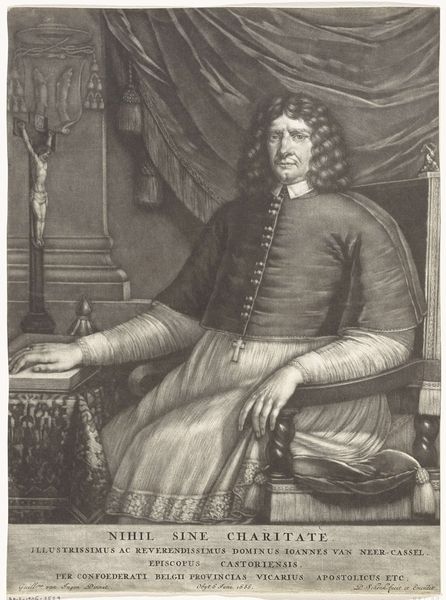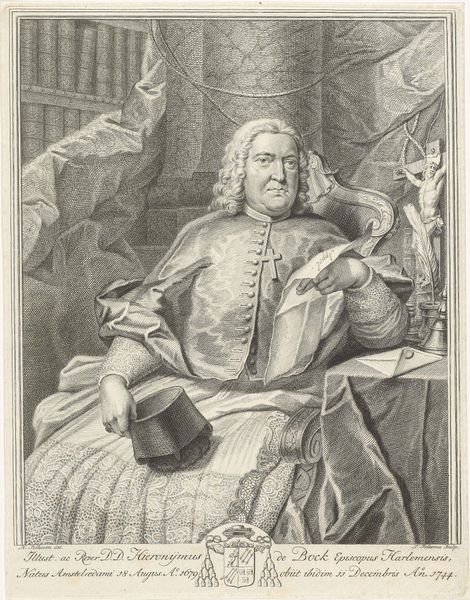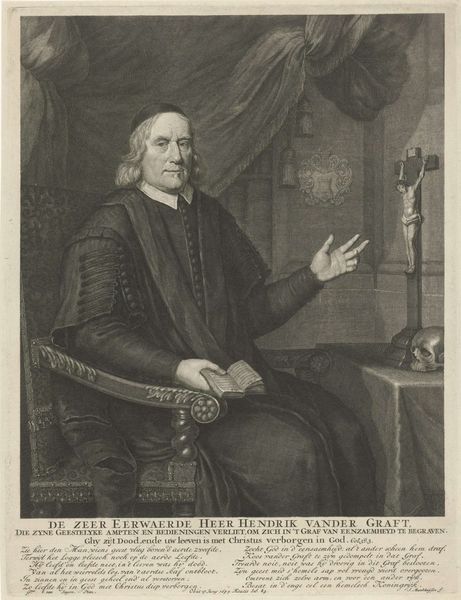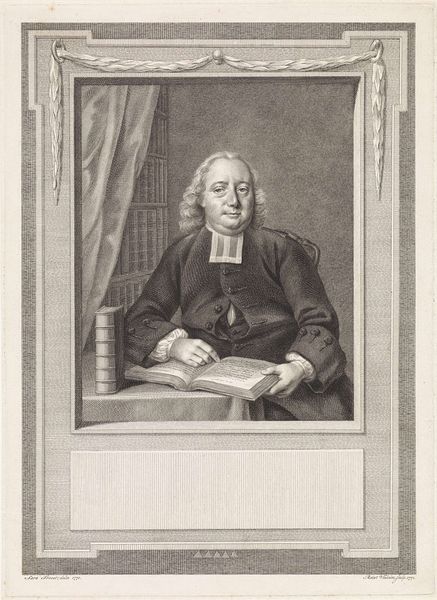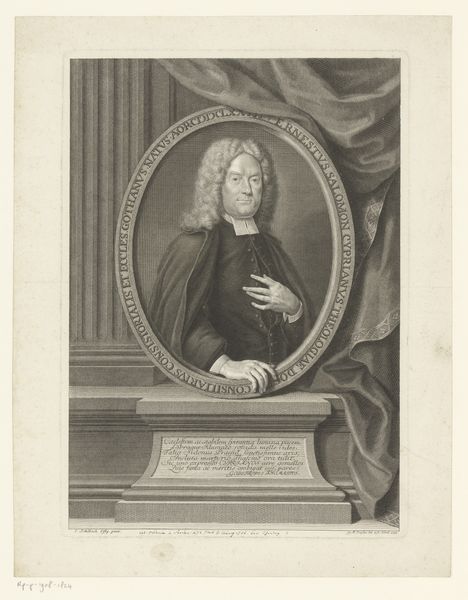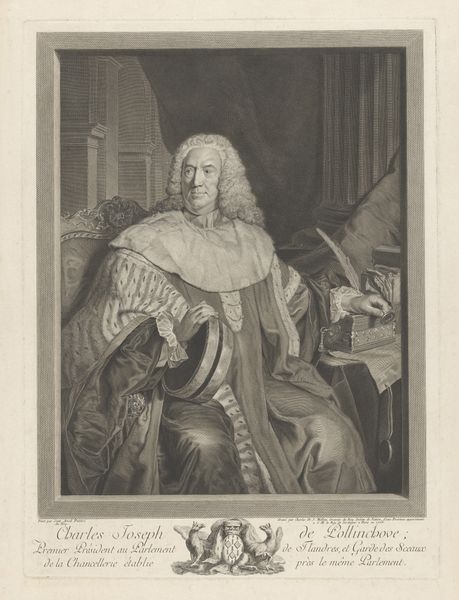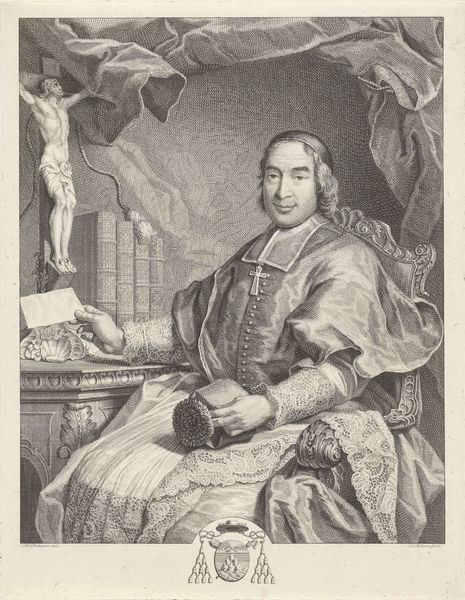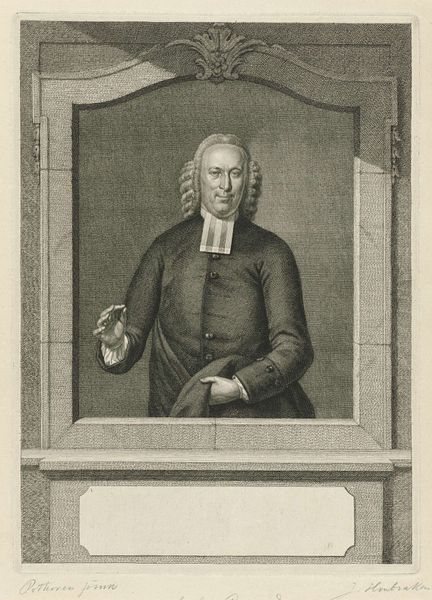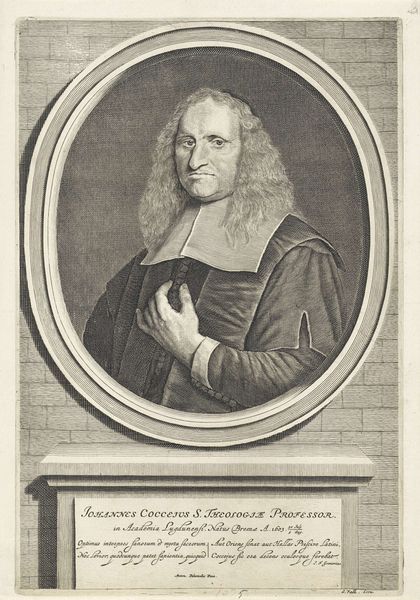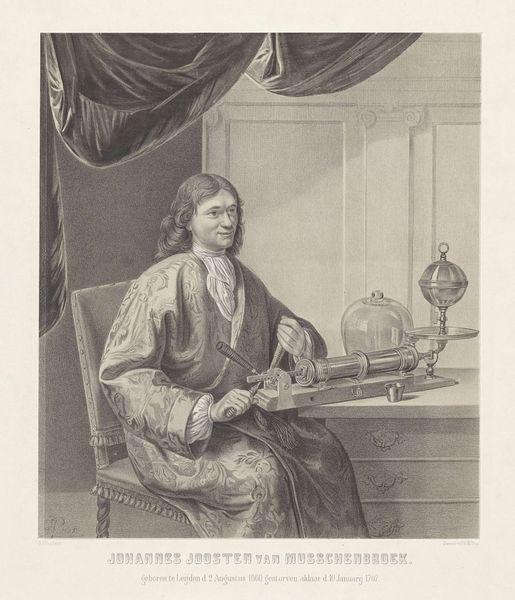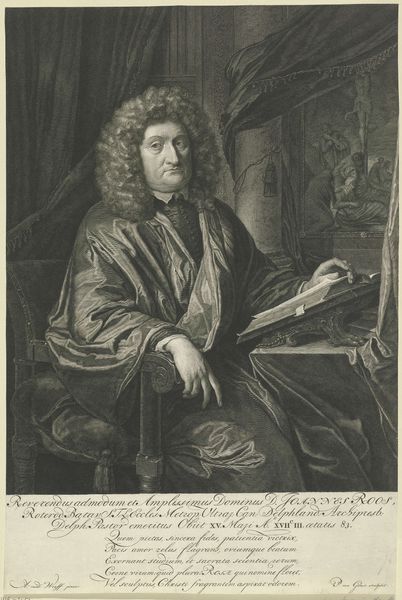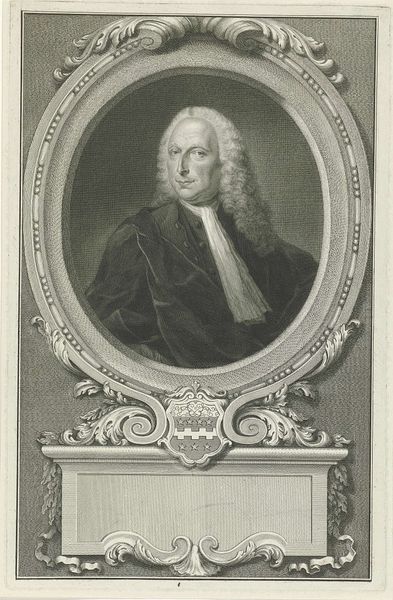
engraving
#
portrait
#
baroque
#
old engraving style
#
history-painting
#
engraving
Dimensions: height 415 mm, width 307 mm
Copyright: Rijks Museum: Open Domain
Curator: This engraving is a portrait of Johannes van Neercassel, a Bishop, created sometime between 1664 and 1721. Editor: There’s such gravity to it. The sharp lines of the engraving give it a real sense of solemnity, almost severity. The use of stark whites and blacks really highlight that. Curator: Yes, and in line with Baroque portraiture, the image emphasizes van Neercassel's authority through symbols: his clerical attire, the crucifix, even the inscription at the bottom. They speak to his spiritual role. Note also the symbols above the crucifix. Editor: Ah, interesting, two salmon rendered almost heraldically, and arranged as if a family crest. But even stripped of that iconographic knowledge, one reads the carefully etched fabrics – the drape behind him, his gown. The diagonal creates a great dynamic tension with the vertical rigidity of his chair. Curator: Beyond simple representation, the portrait embodies van Neercassel’s reputation as a key figure of Jansenism, a controversial theological movement at that time. He was perceived by some as very erudite, his influence rippling through the religious discourse of the period. The inscription at the bottom seems to support that interpretation of Neercassel, the man of wisdom, by directly relating him to “glorious paternal divinity”. Editor: You see the narrative context shaping the image, I'm struck by the geometric tension— the stark rectilinear structures behind the organic softness of the figure. That is so striking to me. It evokes, more than authority, a feeling of confinement, of boundaries being tightly patrolled. Curator: And indeed, that might resonate with the restrictions faced by those involved in religious movements during that era. I am still interested in the continuity of symbolism present. Even the fishes could represent his devotion. Editor: A complex interplay between form and meaning. It truly highlights the rich ambiguity that even a seemingly straightforward portrait can offer. Curator: Precisely, these enduring portraits remind us that cultural memory and continuity, mediated by objects, shape how we interpret history itself.
Comments
No comments
Be the first to comment and join the conversation on the ultimate creative platform.
